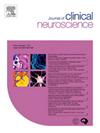Real-world performance evaluation of a telemonitoring system for Parkinson’s disease symptom assessment
IF 1.9
4区 医学
Q3 CLINICAL NEUROLOGY
引用次数: 0
Abstract
Background
Parkinson’s disease (PD) nurses constitute a reliable modality for appraising the motor status of patients, second only to expert neurologists. Consequently, employing PD nurses for the assessment of medical device performance is appreciated to be a fundamental benchmark in the field.
Objective
To evaluate the precision of a telemonitoring device in measuring motor symptoms when utilized at patient’s home during everyday life conditions.
Methods
To ascertain the extent of correlation between device-reported outcomes and PD nurse assessments and the precision with which the device detects symptoms such as gait impairment, rest tremor, bradykinesia, and the presence of OFF, a total of 34 evaluations were conducted by a PD nurse at the patients’ home, each lasting 3 h.
Results
A robust correlation was noted for all three symptoms when analyzed at both 30-minute intervals and cumulatively over the entire 3-hour duration with Pearson’s r range 0.68–0.76 and 0.83–0.90 respectively. Furthermore, substantial agreement was observed for the identification of the presence of all three symptoms with Cohen’s kappa range from 0.61 to 0.71 across all 30-minute evaluations. Finally, the device demonstrates high accuracy in detecting rest tremor (90%), bradykinesia (89%), gait impairment (95%) and OFF state (94%).
Conclusion
This study evaluates for the first time the performance of a remote monitoring device, unobtrusively, at patients familiar environment, with a PD nurse present in non-scripted scenarios. The device exhibited commendable efficacy in the accurate detection of PD symptoms and state.
帕金森病症状评估远程监测系统的实际性能评估
帕金森氏病(PD)护士是评估患者运动状态的可靠方式,仅次于神经科专家。因此,雇用PD护士评估医疗器械性能被认为是该领域的基本基准。目的评价在日常生活条件下在患者家中使用的远程监测装置测量运动症状的精度。方法为了确定设备报告的结果与PD护士评估之间的相关性程度,以及设备检测步态障碍、静息性震颤、运动迟缓和OFF存在等症状的准确性,PD护士在患者家中共进行了34次评估。结果在30分钟间隔和整个3小时持续时间的累积分析中,所有三种症状的Pearson 's r分别为0.68-0.76和0.83-0.90。此外,在所有30分钟的评估中,对所有三种症状的识别与科恩kappa范围从0.61到0.71的基本一致。最后,该设备在检测静止震颤(90%)、运动迟缓(89%)、步态障碍(95%)和OFF状态(94%)方面显示出很高的准确性。本研究首次在患者熟悉的环境中,在PD护士在场的情况下,不显眼地评估远程监测装置的性能。该装置在PD症状和状态的准确检测方面表现出值得称赞的疗效。
本文章由计算机程序翻译,如有差异,请以英文原文为准。
求助全文
约1分钟内获得全文
求助全文
来源期刊

Journal of Clinical Neuroscience
医学-临床神经学
CiteScore
4.50
自引率
0.00%
发文量
402
审稿时长
40 days
期刊介绍:
This International journal, Journal of Clinical Neuroscience, publishes articles on clinical neurosurgery and neurology and the related neurosciences such as neuro-pathology, neuro-radiology, neuro-ophthalmology and neuro-physiology.
The journal has a broad International perspective, and emphasises the advances occurring in Asia, the Pacific Rim region, Europe and North America. The Journal acts as a focus for publication of major clinical and laboratory research, as well as publishing solicited manuscripts on specific subjects from experts, case reports and other information of interest to clinicians working in the clinical neurosciences.
 求助内容:
求助内容: 应助结果提醒方式:
应助结果提醒方式:


